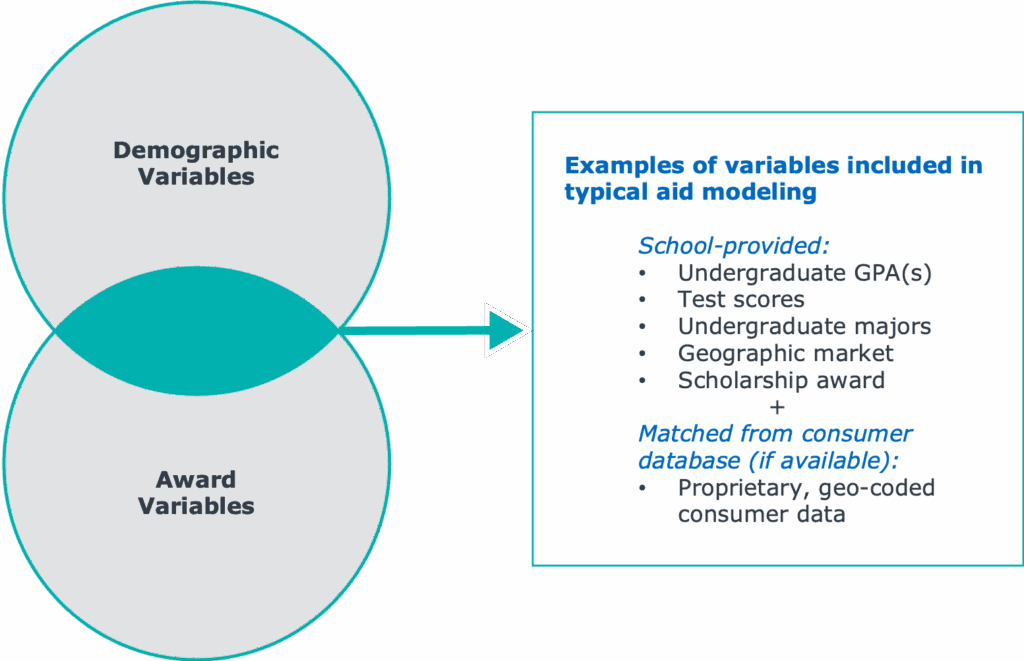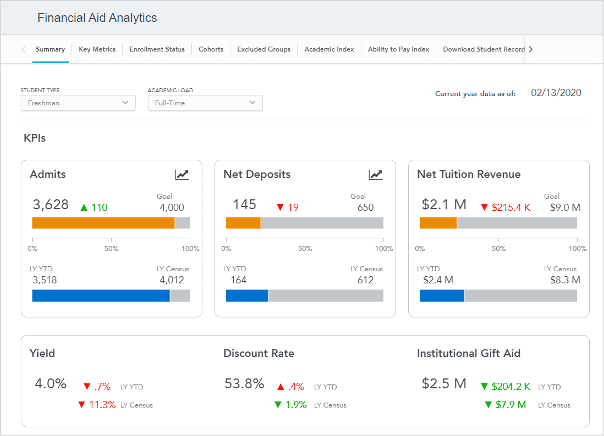Preparing for the end of Grad PLUS: 4 strategies to rethink graduate cost and aid
Cost has always been a top concern for prospective graduate students. But now the stakes are even higher. With the Trump administration’s One Big Beautiful Bill Act phasing out Grad PLUS loans and capping federal borrowing, grad students will face tighter financial constraints than ever before. For institutions, this shift underscores the importance of a thoughtful, data-driven pricing and financial aid strategy. Without one, they risk losing students who may no longer be able to bridge the gap between cost and available aid. They also risk losing millions in revenue.
These changes to federal financial aid come at a time of heightened price-sensitivity and restrictions on international student enrollment, making domestic students even more critical to your enrollment strategy.
For graduate enrollment leaders interested in analyzing and optimizing their pricing and financial aid strategies, especially in light of changing federal policies, here’s how to get started.
1. Identify risks to your institution and model out options to mitigate them
Given the changes to federal aid policy, a critical first step in your aid strategy is to determine your institution’s exposure to tuition revenue and enrollment risk. Our financial aid optimization division, which has supported colleges and universities for more than 30 years, is working with institutions around the country to model pricing, aid, and enrollment scenarios ahead of federal aid policy changes in 2026. These efforts enable institutions to mitigate enrollment and revenue losses while managing other levers such as pricing and remaining or new financial aid effectively.
Consider a student’s loan amount and credit score to determine which students would benefit from exploring the private loan market and which will likely need to rely on institutional support. From there, your team can start to assess the number of students who will likely depend on your school for aid—and to what extent.
Learn More About Pricing and Aid Optimization Tools to Assess Financial Risk to Your Institution
2. Conduct a multi-year historical analysis of admitted and enrolled student populations
The next step in developing or refining your aid policy is to analyze trends across your admitted and enrolled student pools in recent years. As you analyze this data, consider questions like:
- What happened at your institution and in your programs this year—and in the market more broadly?
- How do these trends compare to previous years?
- Where do we see pockets of challenge and opportunity in the analysis?
- How has the composition and yield behavior of our admit pool changed?
- How did students respond to aid offers?
- If there has been a less organized aid policy or process in the past, where might we suggest a more structured approach?
- How do our competitor institutions’ pricing and/or aid strategies put additional pressure on our and student decision making?
For our team of financial aid experts at EAB, this kind of analysis informs a logistic regression equation, which feeds into a live model we’ve perfected over 30 years of financial aid work.
Meet EAB’s Financial Aid Optimization Team
3. Design an aid policy that will help you best meet your goals
The next step is to create an aid policy that is focused, fits the mission of your institution, and can be operationalized. At EAB, our team of statisticians develops a rigorous econometric model to help inform financial aid policies for our partners. We look at a set of demographic variables—like geography and inquiry source—against a set of financial aid variables. Our model also factors in proprietary third-party marketing data. The model sheds light on what tradeoffs an institution might need to make via aid strategy to reach their ultimate goal—whether that’s increasing net tuition revenue, headcount, or other key areas of focus. The modeling work EAB does is transparent and conducted with our partners in live settings so that we can co-create an awarding policy most suitable to their institution.

4. Activate policy and track its efficacy in real-time for remainder of enrollment cycle
Once you’ve decided on your aid policy, it’s important to regularly monitor how your class is coming in, how you’re progressing towards aid and overall goals, and how the market is fluctuating. It’s critical to have the flexibility to adjust aid policy midstream if necessary. From January to mid-summer, our university partners meet regularly with their EAB financial aid optimization team to track these trends and work together to modify aid policy as needed—always keeping headcount and NTR goals in mind.
Are You Losing Grad Enrollments at the Last Minute? Try These 4 Strategies.
Data transparency is key to this iterative process. Our partners have access to a live, real-time financial aid analytics dashboard (similar to the visual below) which shows how their funnel is building and how aid is being accepted. This self-service dashboard provides data on key metrics such as admits, net deposits, net tuition revenue, yield, discount rate, and institutional gift aid.

As graduate students adjust to the end of Grad PLUS loan availability and stricter borrowing limits, the cost of attendance will weigh even more heavily in their enrollment choices. Institutions that respond with transparent pricing, strategic aid policies, and expanded support options now will be best positioned to attract and enroll students. In this new environment, a well-designed pricing and financial aid strategy is not just a competitive advantage but a necessity.

More Blogs

4 questions domestic students will ask before applying to your graduate program

When Grad PLUS disappears: What 8,000+ grad students said about paying for school
